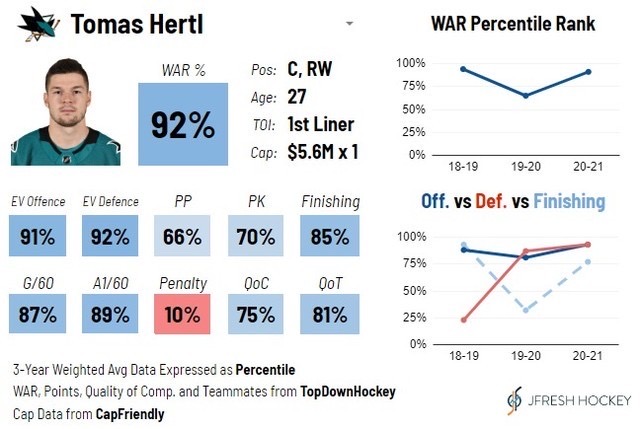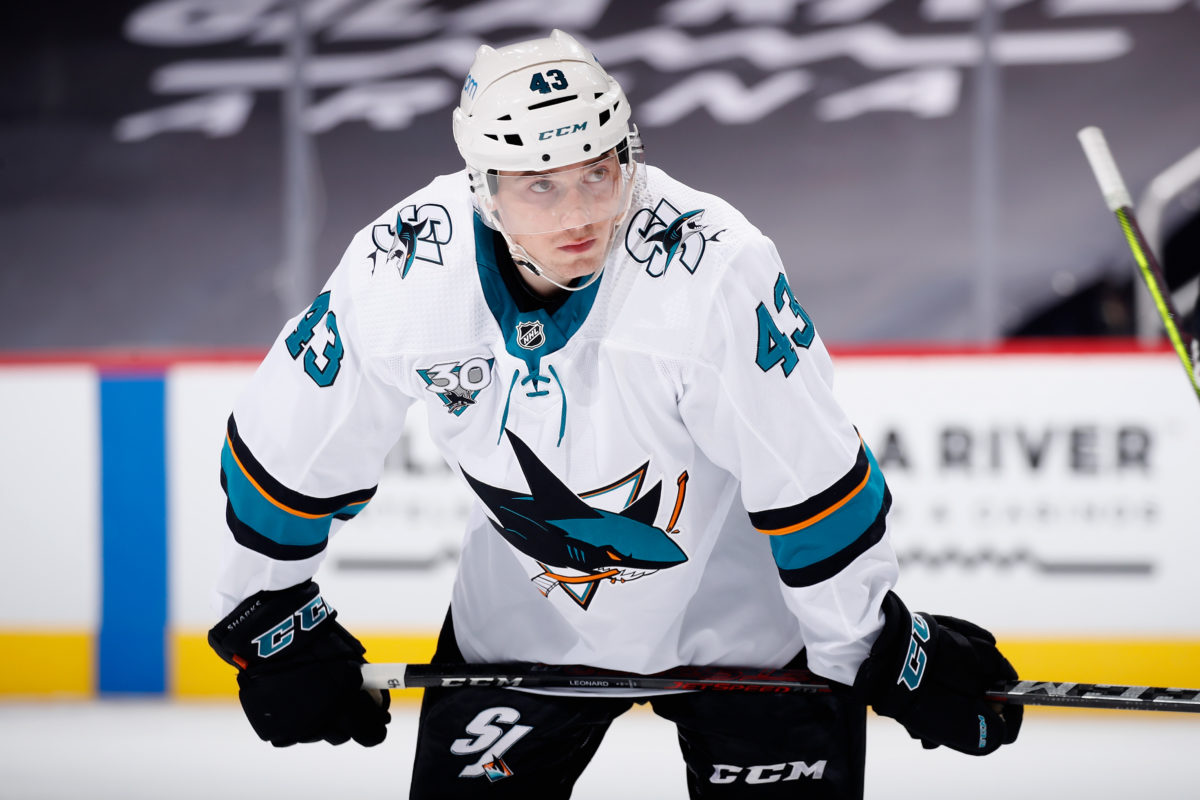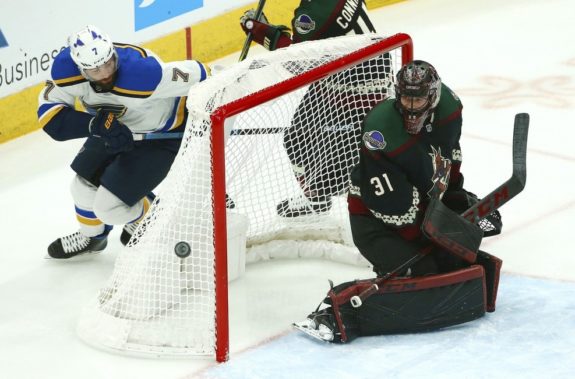After two stellar drafts and quality development of their prospects, the outlook on the San Jose Sharks’ future has gone from glum to receiving legitimate excitement. The team’s future talent was recently shown off at the team’s development camp and prospect scrimmage.
And this excitement largely comes from the appeared NHL-readiness of these prospects. I would be willing to wager that Thomas Bordeleau and William Eklund begin the 2022-23 season on the Sharks’ roster, and each could debut this season. Ryan Merkley, Artemi Kniazev, Santeri Hatakka, Ozzy Wiesblatt, and Daniil Gushchin could also start 2022-23 in the NHL. We are also yet to see Jonathon Dahlen in a Sharks’ uniform.

So, with that remarkable amount of talent in the pipeline, why are the Sharks not penciled in as future contenders similar to the outlook on the Los Angeles Kings and New York Rangers?
For one, the Sharks have lacked the consistently high draft picks the above teams have utilized. But also, San Jose has detrimental contracts that sting more with a flat salary cap and player regression. So, how effective can the Sharks be in 2022-23, given their current financial situation?
The Tomas Hertl Situation
The 2012 first-round selection, despite injury issues, has developed into the Sharks’ best and most dynamic center. Per JFresh’s model, Tomas Hertl is in the top-10% in impact on even-strength offense and defense. He does this while greatly helping his team on both special teams units.

Hertl’s bridge contract expires after the 2021-22 season, and affording him long-term could be an issue. Entering the 2022 offseason, San Jose has just under $15-million in cap space to afford Hertl and key restricted free agents (RFAs). That situation is not good.
A player with similar results and more prestige within the NHL recently signed a contract I would compare to Hertl’s upcoming payday. Sean Couturier recently signed an eight-year extension worth $7.75-million annually. Hertl’s next contract likely entails slightly less money and term, however, this contract is the appeared standard for incredibly effective two-way centers.

So if the Sharks cannot afford Hertl long-term, he would likely be traded away at the previous trade deadline or lost for nothing in free agency. This would leave the Sharks with a massive hole at center. Logan Couture will begin declining and Bordeleau and William Eklund will be far from ready for large roles as centers.
Major salary must be moved out to afford Hertl and the Sharks’ key RFAs.
Numerous RFAs Need Signing
The Sharks saw huge and impressive strides from key youngsters in 2020-21. If they continue progressing, Doug Wilson will have to offer a pretty penny to these pieces of the team’s core.
The first of which is Mario Ferraro. The University of Massachusetts-Amherst alum has grown immensely since he entered the league in 2019-20. The defenseman will become an RFA after the 2021-22 season and warrant the payment of a quality top-four defenseman.

I would speculate he will sign a decent bridge contract, slightly under Kevin Labanc’s bridge. Ferraro could also receive a decent amount of term because of how liked his personality is within the team and his certainty as a top-four defenseman in the Sharks’ future.
Second, Nikolai Knyzhov has emerged as another young option for the team’s defense core of the future. The 23-year-old went from a decent defenseman in the AHL to slotting alongside Erik Karlsson within one year.
The Russian blueliner outperformed Marc-Edouard Vlasic and Radim Simek to warrant this opportunity, and I would liken Knyzhov to Simek in his expectation for a contract extension. This would likely require an annual salary between $2-2.5-million. However, if Knyzhov continues his insane growth in 2021-22, he could warrant a higher price.
Next offseason will also see John Leonard hit the restricted free agency. While his usage by Bob Bougher indicated otherwise, I would argue he should be a middle-six option who succeeds in defensive situations. If he is given this role next season, he could require a salary over $1 million. He could also be outdone by Dahlen, who will debut this season for the Sharks and become an RFA next year. The Swede could require a reasonable price if he performs well next year.

With all those contracts, the Sharks have little, if any, wiggle room to return their expiring players. Unless salary is moved or these players receive extensions under my expectations, the Sharks are set to be pressed against the cap in 2022-23 and have no room to add more talent as the club grows.
Moving out Salary
The Sharks have two positions where I feel there’s enough depth to comfortably move a current contributor.
Beginning with left defenseman, I would speculate Simek is the lowest salary the team could move for adequate wiggle room under the salary cap. The left side of the defense core is fairly set with Ferraro, Knyzhov, and Vlasic, for better or worse. Vlasic will eventually be leapfrogged by Hatakka or Kniazev in the future for his role.

If the Sharks want to comfortably extend both Knyzhov and Ferraro, Simek could be a bit of a luxury the Sharks can no longer afford.
On the wing, San Jose has numerous options on rookie salaries that could add better value than some of the current veterans with hefty paydays. The most obvious to possibly be moved is Evander Kane, whose personal life has made numerous headlines, namely speculation he potentially gambles on Sharks games.
Last season Kane was the team’s most consistent player, on route to leading the team in scoring. His loss on the ice would greatly harm the Sharks. Behind him on the payroll are Timo Meier and Labanc, who have struggled to live up to the expectations of their large bridge contracts.
Firstly, Meier currently has two years remaining at an annual average value (AAV) of $6-million. His 2019-20 season saw him lead the team in points, but 2020-21 saw his production fall below expectations. His RFA status in the 2023 offseason requires a $10-million qualifying offer, but an extension prior to July 1st avoids that potential detriment.

Labanc, costing $4.75-million AAV for three more seasons, also fell below the standard set from signing that extension. His 5v5 scoring rate last season was only under Hertl and Kane on the team, and I would speculate that production should see Wilson shy from dealing him. With both Meier and Labanc not performing to their contracts in the flat salary cap NHL, moving them also means an underwhelming return.
But, the Sharks also have depth underneath these wingers. As mentioned, both Bordeleau and Eklund will soon arrive and enter the league as wingers. In the meantime, the club has depth like Leonard, Dahlen, Alexander Barabanov, and Rudolfs Balcers to fill spots.
2022-23 Will See Huge Strides
The way I see it, the 2022-23 season will mark the Sharks’ uptick toward competing again. Even if the team missed the playoffs in that season, it would showcase the young talent that will headline San Jose for years to come. With solely Simek moved out in a minor deal, this could be the potential lineup:

I do all this to reiterate, the Sharks’ salary cap situation is extremely tight. This roster slightly underpays some depth while carrying no scratches and having just $70,000 to spare. Moving a larger salary than Simek is likely required for this team to progress.
Obviously, an Evander Kane contract termination or early Vlasic buyout would give the team needed flexibility, but those situations are complex and impossible to predict.
The forward depth of this roster is the ultimate headliner. The center core will, unfortunately, be aging, but the core of wingers is superb. There is a solid argument for nearly every winger to have a spot within the top six. The defense is where the team will continue growing pains.
Ferraro, Knyzhov, and Merkley’s progression will, unfortunately, coincide with the aging of former stars Brent Burns, Karlsson, and Vlasic. That likely carries a net value which will see the Sharks not gain positive impacts until Kniazev and/or Hatakka enter the league. We are yet to see the Adin Hill and James Reimer tandem in San Jose, but it’s fairly certain their impact will far outdo the recent Martin Jones performances.

This rough estimate of the Sharks’ 2022-23 roster should show both the promise of the future and the tight financial situation the team will face. San Jose will have numerous tough choices due to their financial situation entering the 2022 offseason. What do you think of the team’s 2022 offseason outlook? Let me know in the comments!